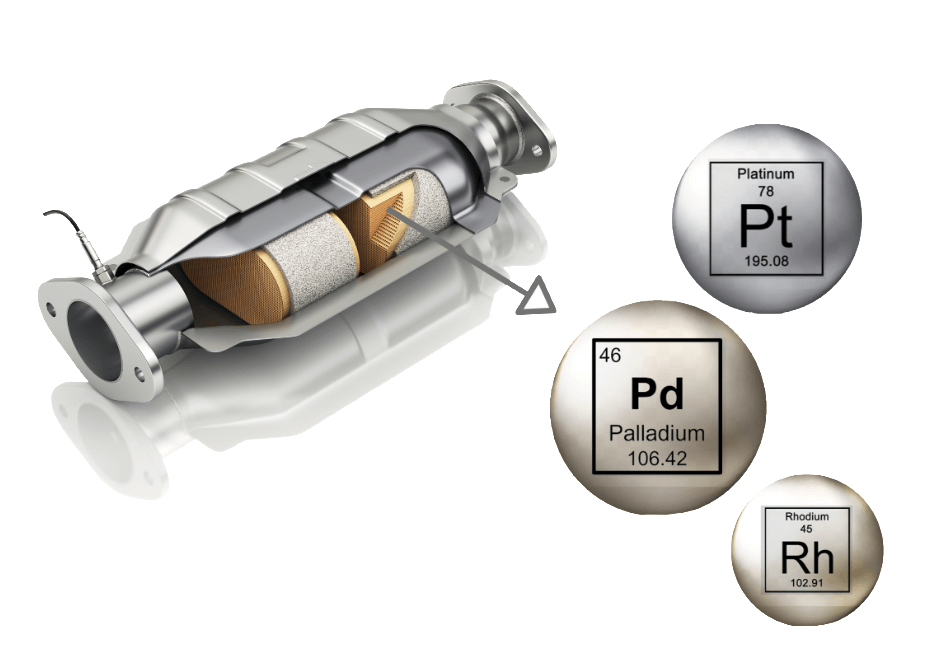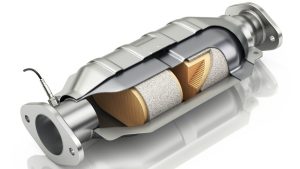Introduction:
In recent years, there has been a significant increase in the theft of catalytic converters from vehicles around the world. These incidents have caught the attention of vehicle owners, law enforcement agencies, and automotive experts. This article aims to explore the reasons behind the rising trend of catalytic converter theft, the implications it has on individuals and communities, and potential measures to prevent such thefts. By understanding the motives behind these crimes, we can work towards safeguarding our vehicles and minimizing the impact on our lives.
The Lucrative Nature of Precious Metals
1. High-Value Metals
Catalytic converters contain valuable precious metals such as platinum, palladium, and rhodium. These metals have seen a surge in demand due to various industries, including automotive, electronics, and jewelry. The limited supply and increasing market prices make catalytic converters an attractive target for thieves seeking to profit from the resale of these metals.
2. Easy Access and Quick Removal
Catalytic converters are located in the exhaust system of vehicles and are relatively accessible. Thieves can quickly remove them using basic tools, often within a matter of minutes. The ease of access and the potential financial gain make catalytic converters an appealing option for opportunistic criminals.
Lack of Identification and Traceability
- Absence of Unique Serial Numbers
Unlike vehicle identification numbers (VINs), catalytic converters typically do not have unique serial numbers or markings that can be easily traced back to a specific vehicle. This lack of identification makes it difficult for law enforcement to track stolen converters and apprehend the culprits.
- Easy Disposal and Scrap Markets
Stolen catalytic converters can be swiftly sold to scrap metal dealers or illicit recycling operations. These outlets may not conduct thorough inspections or ask for proper documentation, making it easier for thieves to dispose of stolen converters and profit from their illicit activities.
Vulnerable Vehicle Targets
- Higher Clearance Vehicles
SUVs, trucks, and hybrid vehicles tend to have a higher ground clearance, making their catalytic converters more accessible to thieves. These vehicles often have larger and more valuable converters, providing a greater financial incentive for criminals.
- Unattended Locations
Theft of catalytic converters commonly occurs in public parking lots, residential areas, and other places where vehicles are left unattended for extended periods. Thieves take advantage of these opportune moments to swiftly remove converters without attracting much attention.
Impact on Vehicle Owners and Communities
- Financial Burden on Owners
Catalytic converter theft has become widespread, causing the loss of a vehicle’s vital component and significant financial consequences. Thieves specifically target catalytic converters because of the valuable metals they contain. The cost of replacing a stolen catalytic converter can be significant, given the escalating prices in the black market. Moreover, thieves often cause additional damage to the vehicle during the theft, which adds to the financial burden experienced by the victims. Furthermore, many insurance policies necessitate vehicle owners to pay deductibles before coverage comes into effect, thereby exacerbating the financial strain they face. Filing an insurance claim for a stolen catalytic converter can result in increased premiums over time, compounding the financial losses. This places significant financial stress on individuals and families, who are left bearing the brunt of the impact caused by these thefts. - Disruption of Daily Life
Catalytic converter theft not only causes financial burdens but also leaves vehicle owners feeling helpless. The stolen converter renders the vehicle inoperable, disrupting daily routines and commitments. Finding alternative transportation can be costly and time-consuming. Public transportation may not be convenient, and relying on others for rides is not always feasible. This situation can lead to missed appointments, delays, and added stress.Obtaining a replacement converter can be frustrating and time-consuming, especially for specific vehicle models. Consequently, the process may take days or even weeks, further prolonging the period of vehicle inoperability. This situation exacerbates frustration and vulnerability, making it challenging to fulfill personal and professional obligations.
Preventive Measures and Solutions
- Catalytic Converter Protection: Various aftermarket products, such as protective shields and locks, are available to deter thieves and make it more challenging to remove catalytic converters. These physical barriers can serve as deterrents and may dissuade potential thieves.
- Improved Legislation and Regulations: Governments and regulatory bodies can introduce stricter regulations on scrap metal dealers, ensuring proper documentation and traceability of catalytic converters. Implementing laws that require unique serial numbers on converters could aid in tracking stolen units.
- Community Awareness and Vigilance: Raising awareness about catalytic converter theft among vehicle owners and communities can foster a sense of vigilance. Encouraging individuals to report suspicious activities and collaborating with local law enforcement can help prevent thefts and apprehend criminals.
Which cars are least likely to have catalytic converter stolen
While no car is completely immune to catalytic converter theft, some vehicles are generally considered less likely to be targeted due to various factors:
- Hybrid vehicles: Hybrid cars have lower amounts of precious metals and unique exhaust system designs, making them less attractive to thieves.
- Newer models: Recent models of both hybrid and non-hybrid vehicles often have advanced security features, reducing their appeal for theft.
- Larger vehicles: Trucks and SUVs with higher ground clearance pose challenges for thieves accessing the catalytic converter, lowering the likelihood of theft.
- Specialized catalytic converters: Certain vehicles use alternative materials or designs in their catalytic converters, reducing their value to thieves seeking
- precious metals.
- Visible deterrents: Vehicles with visible deterrents like protective shields or security markings create additional obstacles for thieves and discourage targeting.
However, it’s important to note that thieves can adapt and target any vehicle based on market value and accessibility. Remaining vigilant, staying informed about local trends, and employing additional security measures are crucial for safeguarding your vehicle. By breaking down the sentences into shorter, concise statements, we maintain the key points while addressing the issue of sentence length.
What car brand has the most catalytic converters stolen?
There isn’t a single car brand that stands out as having the highest rate of catalytic converter theft. Instead, thefts can occur across different car brands and models, influenced by various factors such as the market value of precious metals, accessibility of the converter, and local criminal trends. However, according to reports, catalytic converter theft is more frequently observed in popular car brands like Honda, Toyota, and Ford due to their widespread presence on the road. Therefore, it’s crucial for vehicle owners to stay informed about local trends and take necessary precautions to protect their catalytic converters, regardless of the car brand they own.
Conclusion: Catalytic converter theft has become a widespread issue, driven by the allure of precious metals, the difficulty in identification and traceability, and the vulnerability of vehicles. Understanding the motives behind these thefts and their impact on individuals and communities is crucial for developing effective preventive measures. By implementing protective measures, strengthening legislation, and promoting community awareness, we can deter criminals, safeguard our vehicles, and mitigate the consequences of catalytic converter theft in our daily lives.





Pingback: What's Catalytic Converter? All you need to know
Pingback: Determine Catalytic Converter Prices for Free l Easily Steps